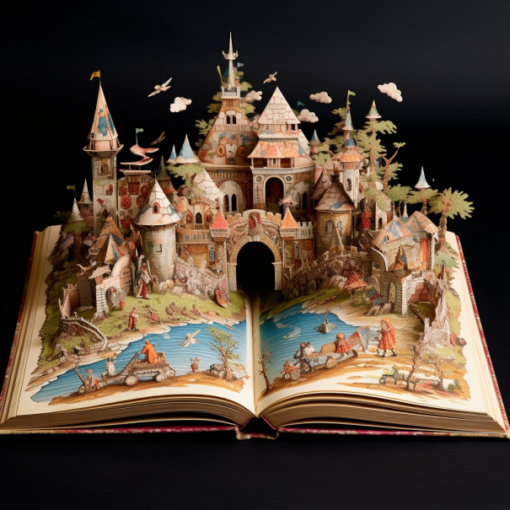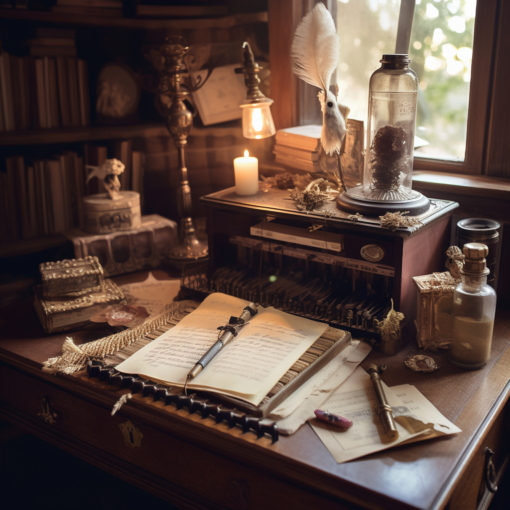Greetings, readers! Percival Q. Higginbottom here with another pondering to share with you. Today, I find myself drawn to the subtle charm of the written word, more specifically, letters. And it’s only appropriate that our exploration revolves around the fascinating world of epistolary novels, the unsung heroes of literary storytelling.
In our fast-paced, digitalized world, where emails, texts, and instant messages have supplaced hand-written letters, the art of writing and receiving letters might seem antiquated. Yet, there’s an undeniable warmth and intimacy associated with letters, a feeling that has been preserved and celebrated in epistolary novels.
Epistolary novels, if you are unfamiliar, are stories told entirely through correspondence, traditionally letters, but expanded in modern literature to include diary entries, newspaper clippings, emails, or even text messages. This unique form of storytelling dates back to early literary history, with one of the earliest examples being “Love-Letters between a Nobleman and his Sister” by Aphra Behn.
What makes epistolary novels so engaging is their intimate and immediate nature. As readers, we find ourselves in a privileged position, privy to the innermost thoughts and feelings of the characters as if they are communicating directly with us. This form adds an authenticity and rawness to the narrative, making the characters’ emotions palpable and their experiences relatable.
Take, for example, “The Color Purple” by Alice Walker, a powerful epistolary novel that explores heavy themes like sexism, racism, and violence in early 20th century America. Through Celie’s letters to God, we experience her journey from suffering and passivity to self-discovery and empowerment, a journey made all the more touching due to the intimate, personal medium of storytelling.
Or consider “The Guernsey Literary and Potato Peel Pie Society” by Mary Ann Shaffer and Annie Barrows, which paints a vivid picture of life in Guernsey during World War II. The novel charmingly unfolds through letters exchanged between the protagonist Juliet Ashton, a writer seeking inspiration, and the quirky members of the titular society.
Even in the realm of young adult fiction, the format thrives. “The Perks of Being a Wallflower” by Stephen Chbosky, for example, explores the trials and tribulations of a teenager navigating high school and dealing with traumas, all through his anonymous letters to a stranger.
In conclusion, while letter writing may seem like a lost art, it survives and flourishes in the realm of epistolary novels. As we delve into the intimate narratives woven by these letters, we’re reminded of the unique power of personal communication.
So, dear readers, consider exploring the world of epistolary novels if you haven’t already. It’s an experience that offers a distinctive depth of engagement and understanding. And who knows, it may even inspire you to pen a letter or two. Until the next time, happy reading and pondering!
Ever yours in ponderance,
Percival Q. Higginbottom

Further Reading:
- Epistolary Novels: A Brief History: A comprehensive overview of the epistolary genre’s history and its role in literature.
- The Guardian’s Best Epistolary Novels: A curated list of some of the best epistolary novels throughout literary history.
- The Power of Letters in Literature: An academic article exploring the unique power that letters bring to literary works.





9 thoughts on “Exploring the Power of Epistolary Novels: A Love Letter to Letter Writing”
Can you be more specific about the content of your article? After reading it, I still have some doubts. Hope you can help me.
Thanks for sharing. I read many of your blog posts, cool, your blog is very good.
Thanks for sharing. I read many of your blog posts, cool, your blog is very good.
I don’t think the title of your article matches the content lol. Just kidding, mainly because I had some doubts after reading the article.
Thank you for your sharing. I am worried that I lack creative ideas. It is your article that makes me full of hope. Thank you. But, I have a question, can you help me?
Your point of view caught my eye and was very interesting. Thanks. I have a question for you.
Your article helped me a lot, is there any more related content? Thanks!
I don’t think the title of your article matches the content lol. Just kidding, mainly because I had some doubts after reading the article.
Can you be more specific about the content of your article? After reading it, I still have some doubts. Hope you can help me.